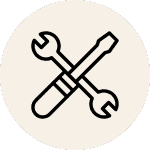
A Guide to Saving on Farm Insurance
Farm insurance costs are rising, but you can cut premiums without cutting safety. In this guide, we’ll show practical ways to tune your farm insurance. Right-sizing coverage, optimizing crop insurance, upgrading documentation, and reducing losses through safety planning (like an Emergency Action Plan). West Side Salvage supports farms nationwide with silo maintenance, EAPs, and 24/7 emergency response, helping you prevent claims and keep coverage affordable season after season.
Disclaimer: None of these steps guarantee savings. They’re proven ways that could reduce your farm insurance premiums depending on your state, carrier, coverage choices, and loss history.
1. Right-Size Your Farm Insurance

- Annual review with your agent: Note new bins/dryers, acreage/livestock changes, electronics/controls upgrades, or agritourism/direct-to-consumer additions.
- Adjust key lines: Dwelling/outbuildings, scheduled equipment, liability & umbrella, business income/extra expense.
- Deductible strategy: Raise deductibles on low-severity, non-critical assets; keep lower deductibles on mission-critical gear (e.g., service entrance, dryer controls).
- Inventory accuracy: Match limits to current replacement costs (equipment, structures, and control systems).
Why this matters: In farm insurance, the biggest savings lever is often coverage fit and deductible alignment, not chasing tiny discounts.
2. Compare Carriers

- Apples-to-apples quotes: Same limits, deductibles, and endorsements across carriers.
- Check carrier reputation: Use NAIC consumer tools to view complaint information and state contacts; the NAIC Complaint Index compares complaints relative to market share.
- Financial strength & claims culture: Consider service quality alongside the premium.
Why this matters: You’re buying claim handling and stability, not just a number on your farm insurance bill.
3. Tune Your Crop Insurance

- Re-evaluate annually: Don’t roll last year’s settings forward by default.
- Base + add-ons:
- MPCI / Revenue coverage as your base.
- ECO (Enhanced Coverage Option): County-level protection covering part of your deductible; for yield/revenue policies, the government pays 65% of the ECO premium (2025+).
- WFRP (Whole-Farm Revenue Protection): One policy for the whole operation, up to $17M in insured revenue, available nationwide. Useful for diversified/specialty farms.
- Match to risk tolerance: Balance coverage levels with cash-flow realities and regional risk.
Why this matters: Federal support keeps many crop options relatively affordable; tuned correctly, crop coverage stabilizes revenue and prevents costly gaps in your overall farm insurance plan.
4. Document Assets & Maintenance

- Asset schedule: Photos, serials, receipts, and valuations for bins, motors, dryers, conveyors, and control panels.
- Maintenance logs: Dated entries for cleaning, lubrication, guard repairs, electrical work, and software/PLC updates.
- Cloud copies: Store off-site; share summaries with your agent before renewal.
Why this matters: Clean documentation speeds claims and can help your agent rate your farm insurance more accurately (often lowering long-term costs).
5. Build (and Follow) a Safety Program

- Emergency Action Plan (EAP): Roles, communications, power isolation, contractor coordination, and engulfment response.
- Core procedures: Housekeeping for dust, lockout/tagout, hot-work permits, bin-entry permits, fall protection, and training refreshers.
- Compliance anchor: Align with OSHA 1910.272 requirements aimed at preventing dust fires/explosions, engulfment, and falls.
Why this matters: Loss frequency and severity drive future farm insurance premiums; documented safety reduces both.
6. Harden Buildings & Roofs

- Ask what carriers value locally: Hail, straight-line wind, tornado, ice.
- Targeted upgrades: Impact-resistant shingles tested with realistic hail protocols, improved roof edges/flashing, wind- and rain-resistant attic vents, protected electrical, and surge protection for controls.
- Look for FORTIFIED guidance: IBHS’s FORTIFIED standards incorporate hail supplements that require shingles able to withstand up to 2-inch hail in prone regions.
Why this matters: Durability upgrades reduce claim frequency/severity, and downtime during critical harvest windows.
7. Set Smart, Risk-Aligned Deductibles

- Scenario plan: Price different deductibles against your cash reserves and loss history.
- Tiered approach: Higher deductibles for non-critical buildings; lower deductibles for critical-path assets and control systems.
- Revisit after changes: Adjust when you add bins, upgrade dryers, or automate equipment.
Why this matters: Deductible optimization trims farm insurance premiums without creating painful surprises.
8. Bundle Strategically & Plan Renewals

- Bundling: Property, liability, auto, and umbrella can reduce total cost, but verify with side-by-side quotes.
- Renewal discipline: Put all policies on one calendar; begin your review 30–60 days out.
- Negotiation edge: Early reviews catch stale limits and prevent rushed, sub-optimal renewals.
Why this matters: Planning prevents gaps and helps you negotiate better farm insurance pricing.
9. Train Your Team, Reduce Claims

- Seasonal refreshers: Pre-harvest and pre-winter sessions on bin-entry permits, engulfment response, auger guarding, PTO safety, fire response, and LOTO.
- Proof of training: Sign-in sheets and short quizzes; post procedures near equipment.
Why this matters: Good training turns near-misses into non-events, improving your claims record (a key premium driver).
10. Re-shop After Any Operational Change

- Tell your agent now, not later: Added storage? Higher-BTU dryer? Different crops or acreage? Agritourism/direct-to-consumer?
- Re-shop cadence: Every 2–3 years or after big changes; keep comparisons apples-to-apples.
Why this matters: Farms evolve quickly. Stale coverage = avoidable cost and risk in your farm insurance program.
How West Side Salvage Helps Lower Risk
We review and help develop farm-specific Emergency Action Plans tailored to your grain system, covering bin entry, engulfment response, power isolation, contractor coordination, and clear communications. When the plan is practiced and kept current, procedures turn into muscle memory. The result is fewer incidents and a stronger loss history, which is exactly what helps keep farm insurance premiums in check.
Our teams also handle silo cleaning and preventive maintenance that target the root causes of costly losses: packed grain, caking, dust accumulation, and blockages that stress motors and elevate fire or explosion risk. Regular, professional cleaning shortens downtime during harvest and helps prevent the kinds of claims that drive next year’s farm insurance rates higher.
If or when emergencies happen, we can mobilize nationwide to contain the event quickly, protect people and product, and stabilize equipment. Fast containment limits loss severity, and severity is a big factor in how carriers view and price your farm insurance over time.